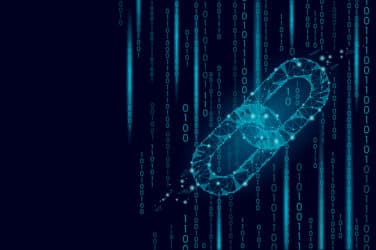
By Mike Wilkins, Head of Industry Solutions, R3
“Digital transformation for the buy side” has been a topic of conversation at countless conferences (and more recently, webinars) over the past 10 years. Asset managers both large and small have been looking for ways to post strong returns while removing friction associated with operations.
But what does this actually mean? Let’s take a quick look at three practical, tangible ways that digital assets and blockchain are driving this change at an increasing pace.
EXPANDING THE UNIVERSE OF INVESTABLE ASSETS

While the volatility associated with cryptocurrencies such as bitcoin grabs headlines, the reality is that the advent of digital assets has expanded the product set available to asset managers. In a 2021 Fidelity survey, 70% of institutional asset managers surveyed expected to invest in digital assets in the future, with 90% of them planning to allocate into those assets in the next five years. It’s no surprise that in response investment managers and exchanges are broadening their product offerings to attract buy-side interest.
For investors seeking to profit from crypto swings without the complexities of wallets or the concerns related to the trading and clearing process, a number of providers have launched crypto ETFs. These instruments are usually composed of a basket of near-term crypto futures (such as the BTC or ETH contracts listed on CME) which need to be rolled over as they get closer to expiration. While not an exact match for holding crypto itself, asset managers with a longer-term view can track overall direction.
Another option now available to institutions is a digital currency trust. In August 2022, BlackRock announced the launch of a private trust which will offer institutional investors direct access to cryptocurrencies, starting with bitcoin.
While both ETFs and trusts make exposure to digital currencies more accessible and mitigate the risk and administrative burdens associated with digital currency, there’s plenty of room for further process improvement. BlackRock’s launch announcement of their digital trust product mentioned that they intend to leverage both permissioned blockchain and tokenization as a means of enhancing their digital currency offering.
This demonstrates a commitment to innovation not only in the products that they deliver, but also to how to deliver them via forward-thinking ways.
STREAMLINE RECONCILIATION AND SETTLEMENT PROCESSES
Even if an asset manager doesn’t choose to dive headlong into incorporating digital assets into their portfolio, they can still reap the benefits of the underlying technology and processes to operate faster and cheaper.
One of the most onerous burdens an asset manager faces is trade reconciliation. The larger they are, the more likely it is that they’ll be executing trades across multiple brokers which then clear through multiple firms. The volume of data associated with these trades adds up quickly, and much of the process of reconciling them still is handled through a semi-automated and disjointed combination of emails, spreadsheets and FIX messages. Recent technology changes have moved the process to be much more exception-based, but resolving those exceptions still takes time and requires human intervention.
Using blockchain to underpin trade reconciliation streamlines the process. Instead of individual ledgers maintained by each asset manager, broker and clearer, all counterparties move their activity onto a single permissioned, immutable ledger. With all data from each transaction in one place, the need to go back and forth disappears because a single ledger means there is nothing to reconcile. Eliminating the need for reconciliation reduces both the financial risk and human capital costs associated with manual processes.
In addition to virtually eliminating the need for trade reconciliation, a permissioned blockchain also supports faster trade settlement. A digital record which is shared and synchronized across all parties involved means that participants can dictate their own settlement timeframes, whether that’s compressing from T+2 to T+1, moving to multiple scheduled settlement intervals per day, or even settling in real-time.
The first step towards faster settlement involves tokenization, the process of converting both the asset and the payment associated with the asset into individual digital tokens. The asset and payment tokens are then combined into a smart contract which contains the characteristics of the asset and the details of the payment. This smart contract is then distributed simultaneously to every party on the blockchain for validation. Once validated, the asset token is released to the buyer and payment is released to the seller.
Speeding up the settlement process not only reduces risk across the entire spectrum, it also creates a more open marketplace where smaller players have lower barriers to entry and marketplaces can support continuous trading, clearing and settlement.
SIMPLIFY THE TASKS ASSOCIATED WITH FUND ADMINISTRATION
As if post-trade reconciliation and settlement workflows weren’t enough for asset managers to contend with, there is also a whole set of administration workflows they need to look after including investor onboarding, compliance and reporting. These workflows have grown more complex in recent years with alternative assets such as real estate and private equity commitments becoming more popular as a component of investment portfolios. Although increasingly popular, many of these investments are illiquid and more difficult to value.
The valuation data can often become outdated and siloed, leading to discrepancies.
However, by storing alternative investment valuation data on a blockchain, multiple parties including managers, investors and fund accountants can access a ‘single source of truth’ containing up-to-date information for a much more accurate valuation.
Additionally, the tokenization concepts discussed earlier can also support numerous aspects of fund administration workflows. Alternative investments can be converted to tokens which can represent fractional shares of a commercial real estate development or a multi-year venture capital commitment. Investors can tokenize their investable capital, giving them flexibility to move in and out of different funds when market conditions warrant. Having all of this data centralized on a ledger means regulators and auditors have a single source of information they can request data from on-demand, shortening the inquiry process.
CONCLUSION
As we continue to see more and more buy-side adoption of digital assets, we’ll also continue to see the industry look for ways to leverage the associated technologies to run more efficiently. Efficiency in operations will reduce the time buy-side market participants need to spend on administrative tasks, enabling them to spend more time on innovating their offerings and posting better returns.
This article first published in the Q3 2022 issue of GlobalTrading.





